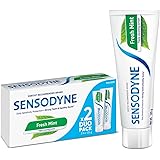Dental Emergencies – What to Do in Case of a Broken Tooth, Infection, or Severe Pain
Introduction
Dental emergencies can happen unexpectedly and require immediate attention to prevent further complications. Whether it’s a broken tooth, severe pain, or an infection, knowing how to respond can help minimize damage and discomfort until you receive professional care. This guide will cover common dental emergencies, their causes, symptoms, and immediate steps to take before seeing a dentist.
Common Dental Emergencies and How to Handle Them
1. Broken or Chipped Tooth
A broken or chipped tooth can result from accidents, biting hard foods, or weakened enamel.
Symptoms:
-
Visible fracture or missing part of the tooth.
-
Pain or sensitivity to hot and cold.
-
Sharp edges that may injure the tongue or cheek.
Immediate Steps:
-
Rinse your mouth with warm water.
-
Apply a cold compress to reduce swelling.
-
If a piece of the tooth is saved, keep it in milk or saline.
-
Use dental wax or sugar-free gum to cover sharp edges.
-
Visit a dentist as soon as possible for restoration options like bonding or crowns.
2. Knocked-Out Tooth (Avulsed Tooth)
A knocked-out tooth is a serious dental emergency that requires quick action.
Immediate Steps:
-
Pick up the tooth by the crown (avoid touching the root).
-
Rinse the tooth gently with water if dirty, but do not scrub.
-
Try reinserting the tooth into its socket if possible.
-
If reinsertion isn’t possible, place the tooth in milk or a saline solution.
-
Seek emergency dental care within 30-60 minutes for the best chance of saving the tooth.
3. Severe Tooth Pain (Toothache)
Toothaches can be caused by cavities, infections, or gum disease.
Symptoms:
-
Persistent, throbbing pain.
-
Swelling in the gums or face.
-
Sensitivity to temperature or pressure.
Immediate Steps:
-
Rinse with warm salt water to clean the area.
-
Floss gently to remove any food debris.
-
Apply a cold compress to the cheek if swollen.
-
Take over-the-counter pain relievers like ibuprofen.
-
Avoid placing aspirin directly on the gums.
-
See a dentist immediately if the pain persists.
4. Dental Abscess or Infection
A dental abscess is a pocket of pus caused by a bacterial infection. It can be life-threatening if left untreated.
Symptoms:
-
Severe tooth pain.
-
Swollen gums with pus formation.
-
Fever and bad breath.
-
Swelling in the face or neck.
Immediate Steps:
-
Rinse your mouth with warm salt water.
-
Take pain relievers but avoid self-medicating with antibiotics.
-
Apply a cold compress to reduce swelling.
-
Seek immediate dental or emergency medical care.
5. Lost Filling or Crown
A lost filling or crown exposes the underlying tooth, leading to sensitivity and discomfort.
Immediate Steps:
-
Keep the crown or filling if possible.
-
Use dental cement, petroleum jelly, or sugar-free gum to cover the area temporarily.
-
Avoid chewing on the affected side.
-
See a dentist for a permanent restoration.
6. Bleeding Gums or Soft Tissue Injury
Bleeding gums may result from injury, gum disease, or aggressive brushing.
Immediate Steps:
-
Rinse with warm salt water.
-
Apply gentle pressure with gauze or a clean cloth.
-
Use a cold compress to reduce swelling.
-
If bleeding persists for more than 10 minutes, seek emergency dental care.
Preventing Dental Emergencies
-
Maintain good oral hygiene with regular brushing and flossing.
-
Wear a mouthguard during sports activities.
-
Avoid chewing hard foods or objects.
-
Visit the dentist regularly for checkups and early treatment.
When to Seek Emergency Dental Care
You should see a dentist immediately if:
-
- You experience severe or persistent tooth pain.
- A tooth is knocked out or fractured.
- There is excessive bleeding that doesn’t stop.
- You have signs of an infection, such as fever, swelling, or pus discharge.
Conclusion
Dental emergencies can be painful and distressing, but quick action can help prevent further complications. Knowing what to do in case of a broken tooth, infection, or severe pain can make a significant difference in preserving your oral health. Always seek professional dental care as soon as possible to receive proper treatment and prevent long-term damage.
Frequently Asked Questions (FAQs)
Q1: Can a knocked-out tooth be saved?
A: Yes, if reinserted within an hour. Keep the tooth in milk or saliva and visit a dentist immediately.
Q2: How do I relieve a severe toothache at night?
A: Rinse with warm salt water, take pain relievers, and apply a cold compress. See a dentist as soon as possible.
Q3: What should I do if my braces wire breaks?
A: Use orthodontic wax to cover sharp edges and see your orthodontist.
Q4: Can an abscess heal on its own?
A: No, an abscess requires professional drainage and antibiotics to prevent serious complications.
Q5: What should I keep in my dental emergency kit?
A: Gauze, pain relievers, dental wax, saline solution, and a small container for a knocked-out tooth.
By staying prepared and informed, you can handle dental emergencies effectively and protect your oral health!





